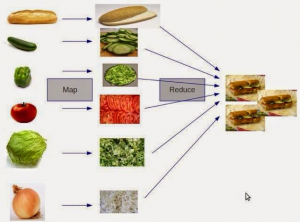Ishaan Tharoor writes of a new edition of ‘Mein Kampf in What George Orwell said about Hitler’s ‘Mein Kampf’ saying in part:
But, in my view, the most poignant section of Orwell’s article dwells less on the underpinnings of Nazism and more on Hitler’s dictatorial style. Orwell gazes at the portrait of Hitler published in the edition he’s reviewing:
It is a pathetic, dog-like face, the face of a man suffering under intolerable wrongs. In a rather more manly way it reproduces the expression of innumerable pictures of Christ crucified, and there is little doubt that that is how Hitler sees himself. The initial, personal cause of his grievance against the universe can only be guessed at; but at any rate the grievance is here. He is the martyr, the victim, Prometheus chained to the rock, the self-sacrificing hero who fights single-handed against impossible odds. If he were killing a mouse he would know how to make it seem like a dragon. One feels, as with Napoleon, that he is fighting against destiny, that he can’t win, and yet that he somehow deserves to.
The line:
If he were killing a mouse he would know how to make it seem like a dragon.
is particularly appropriate in a time of defense budgets at all time highs, restrictions on travel, social media, “homeland” a/k/a “fatherland” security, torture as an instrument of democratic governments, etc.
Where is this dragon that threatens us so? Multiple smallish bands of people with no country, not national industrial base, no navy, no airforce, no armored divisions, no ICBMs, no nuclear weapons, no CBW, who are most skilled with knives and lite arms.
How many terrorists? In How Many Terrorists Are There: Not As Many As You Might Think Becky Ackers does the math based on the helpful report from the U.S. Department of State, Country Reports on Terrorism.
Before I give you Becky’s total, which errs on the generous side of rounding up, know that the Department of Homeland security already has them outnumbered.
Try 184,000.
Yep, just 184,000. Even big, bad “Al-Qa’ida (AQ)” and its three affiliates (“Al-Qa’ida in the Arabian Peninsula”; “Al-Qa’ida in Iraq”; and “Al-Qa’ida in the Islamic Maghreb”) boast only 4000 bad guys combined. (The main Al-Qa’ida’s “strength” is “impossible to estimate,” but the Reports admits that its “core has been seriously degraded” following “the death or arrest of dozens of mid- and senior-level AQ operatives.” “Dozens,” not “hundreds.” Hmmm.)
And remember, 184,000 is a ridiculously inflated figure – both because of our generous accounting and also because governments often expand a word’s meaning well beyond the dictionary’s. You may recall the Feds’ contending with straight faces in 2004 that if “a little old lady in Switzerland gave money to a charity for an Afghan orphanage, and the money was passed to al Qaeda,” she met the definition of “enemy combatant.” Five years later, a federal Fusion Center decreed that “if you’re an anti-abortion activist, or if you display political paraphernalia supporting a third-party candidate or [Ron Paul], if you possess subversive literature, you very well might be a member of a domestic paramilitary group.” No telling how many confused Swiss grandmothers and readers of Techdirt’s subversive articles cluster among those 184,000.
That number grows even more absurd when we compare it with the aforementioned Homeland Security’s 240,000 Warriors on Terror. Meanwhile, something like 780,000 cops stalk us nationwide, whose duties also encompass tilting at terrorism’s windmill. And that’s to say nothing of the scores of other bureaucracies at the national, state, and local levels hunting these same 184,000 guerrillas as well as an additional 1,368,137 troops from the armed forces [click on “Rank/Grade – current month”].
Even if you round the absurd number of terrorists up to 200,000 and round our total down to 2,000,000, at present the United States along has the terrorists outnumbered 10 to 1. Now add in Europe, China, India, etc. and you get the idea that terrorists really are the mice of the world.
Personally I’m glad they are re-printing ‘Mein Kampf.’
Good opportunity to be reminded that leaders who are making dragons out of the mice of terrorism aren’t planning on sacrificing themselves, they are going to sacrifice us, each and every one.

